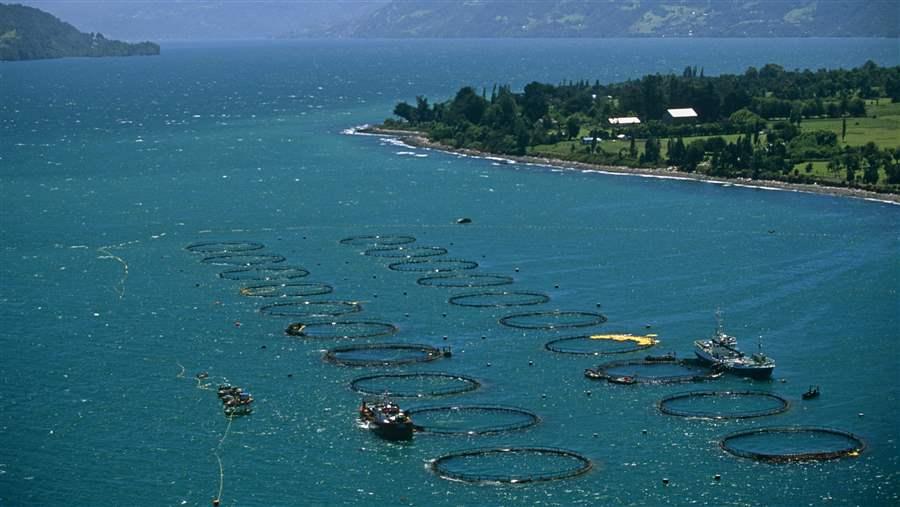Bacteria at a Chilean Aquaculture Site Have More Antimicrobial Resistance Genes
 Getty Images
Getty ImagesFish farms in southern Chile.
The use of antibiotics and other antimicrobial compounds in salmon aquaculture may have increased the prevalence of resistance genes in marine bacteria in one area in Chile, according to a new study by Felipe Cabello and colleagues. This study was supported by the Lenfest Ocean Program and published in the journal Environmental Microbiology Reports.
The researchers looked at an aquaculture site and at a non-aquaculture site eight kilometers away for genes in bacteria that confer resistance to antimicrobials. They first grew bacteria from these sites in the presence of oxytetracycline, florfenicol, and oxolinic acid (a quinolone), and then analyzed their DNA for several known resistance genes. All these antimicrobials are commonly used types of broad-spectrum antibiotics for treating bacterial infections in humans and animals.
Overall, there were very few differences in the presence and levels of resistance with the notable exception of genes resistant to quinolones. Bacteria at the aquaculture site were significantly more likely to have multiple quinolone resistance genes than those at the non-aquaculture site.
An important concern is that resistance genes from the environment might be transferred to bacteria that can infect humans, resulting in illness that resists treatment. This study found some suggestive evidence for such a connection in its analysis of bacteria from human patients with urinary tract infections at two hospitals, one in Chile near an aquaculture operation, the other in New York City. Some of the bacteria isolated from the Chilean patients contained some of the same quinolone resistance genes present in marine bacteria in this region. This suggests transfer of genes between these bacterial populations. Further research will be needed to confirm this intriguing link.

